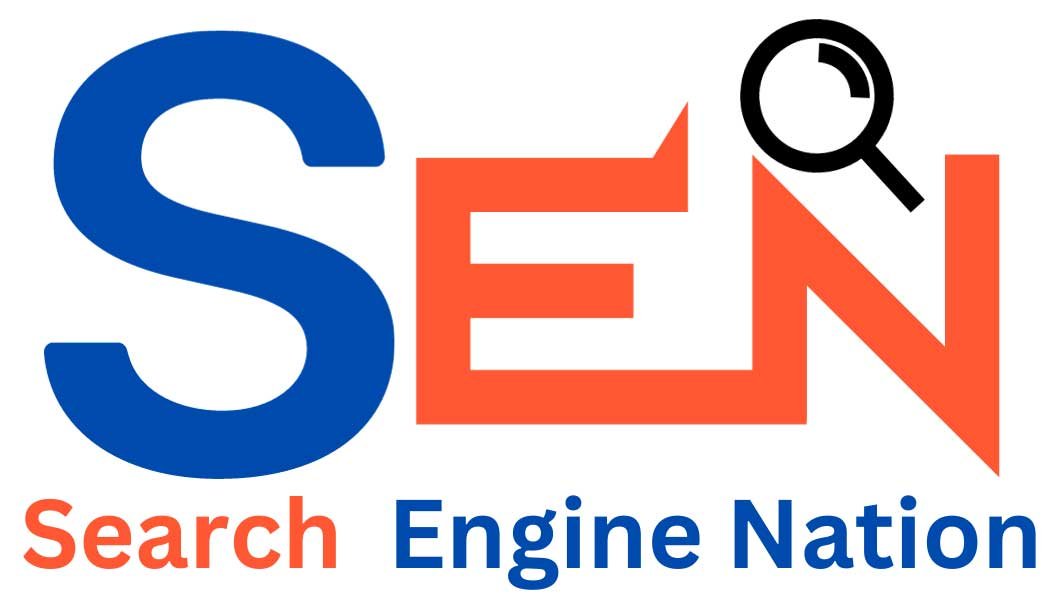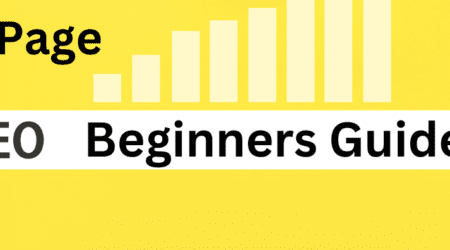Here Are Some Ways How To Rank On Google In 2024
Anshita Singh2024-02-17T07:28:25+00:00Every year provides new possibilities to rethink and improve our SEO strategy to be more focused and effective for our businesses and clients. Organic search is projected to account for 55 percent of all internet traffic, making SEO a worthwhile and reasonable investment for companies looking to expand their business operations and income. All small businesses start-ups need good seo also you need good seo strategies for ecommerce. Google’s algorithm is updated regularly, The last Google began rolling out its latest Core Update November 2023. and the competitiveness landscapes of keywords are continuously changing. Therefore, figuring out how to defeat these algorithm upgrades with proper SEO strategy to stay on the top page of the SERP is critical.
Make High-Quality Content A Priority

Google’s algorithms might be changing all the time; however, Google always puts emphasis on high-quality content. Therefore, your approach should always focus on valuable content for your websites above everything else in order to rank better in search results. High-quality content is required for both on-page and off-page SEO strategies. If you are not sure what quality implies, consider the following quality signals that Google considers when evaluating web pages:
- Reporting or analysis that is unique
- Content that is quick to load, engaging, and aesthetically stable.
- Strong relevancy and search intent satisfaction
Google is growing better at identifying excellent content. Even if your rivals’ domains have more authority than yours, you can still outsmart them if Google recognizes your content more comprehensively. So, stop wasting your time and ask your team to focus on valuable content.
Understand The EAT Rule.

Despite Google’s continually changing algorithm, the EAT SEO marketing strategy can help you achieve long-term SEO success. EAT stands for knowledge, authority, and reliability. It simply allows you to make your brand successful and gain the full recognition it deserves. One can take specific actions to develop one’s brand’s authority, reliability, and reputation in line with their SEO marketing strategy. Here are a few examples: Request that consumers submit positive reviews on trustworthy sites such as Google. Use reviews and other types of social proof to demonstrate EAT on your website.
Learn The Eat Principle
The EAT principle can help you master longterm SEO success, despite Google’s constantly changing algorithm. Sounds pretty great doesn’t it? But what in the world is EAT?
EAT stands for expertise, authority and trustworthiness. This essentially measures your brand’s online reputation. Google ranks sites that are established, brand authentic, and trustworthy over unknown sites.
If your industry is a bit more saturated than other markets, you might be thinking how in the world am I supposed to beat out some of my competitors who are huge companies, or well established brand names?
Start small, don’t feel overwhelmed. There are clear steps you can take to enhance your brand’s authority, credibility, and reputation.
Ask customers to leave good reviews on reputable sites like Yelp, the BBB, Amazon, or Google.
Get quality links from websites in your industry.
Take action and encourage mentions in public forums.
Showcase EAT on your website through testimonials, case studies, reviews, and other forms of social proof.
Find Out Which Of Your Competitors' Pages Are Doing The Best.

The better you understand your competitors’ local SEO strategy, the higher your site will perform. You can take a moment to figure out what’s performing for the pages you compete against on the SERPs. Finding your rivals’ best-performing sites is a good place to start so you can get a sense of where their traffic is originating from and what’s driving it. Analyzing the local SEO strategy of your competition might reveal things like keyword and link gaps which can help you in the long run.
Long-Tail And Low-Competition Keywords Should Be Targeted.
If you are running an SEO digital marketing campaign in a highly competitive market, it is important you know about the importance of keywords. It is especially true if you are targeting competitive keywords. You can identify less competitive or long-tail keywords with similar search intent but are more feasible to rank to bring traffic to your website. This usually involves more work and study, but it’s well worth it if you want to start establishing your SEO digital marketing campaign.
Enhance Your Seo Metrics.
The importance of SEO in digital marketing is prevalent, and there are many ways to increase your SEO traffic. You can start by learning more about existing keyword ranks; Google Search Console is one of the greatest tools that can help you understand the keywords bringing in traffic. You may use this to find any web pages with a lot of impressions but not a lot of organic traffic. Increasing backlinks can improve their quality, and it might result in a significant increase in traffic to your site.
Understand Your Site’s Core Web Vitals.

Core web vitals might be a new SEO term you haven’t heard of. But in 2024, it’s essential you familiarize yourself with what these mean, and the metric benchmarks behind them. In May, Google will roll out Page Experience, a new algorithm that ranks pages based off of its core web vital scores. So what are core web vitals? Google defines them as a set of metrics that measure speed, responsiveness, and visual stability. We dig a little deeper into what core web vitals mean in this post, but here’s a quick recap.
Largest Contentful Paint (LCP) – Measures page speed. This is the time it takes for a page’s main content to load. The ideal LCP is 2.5 seconds or faster.
First Input Delay (FID) – Measures page responsiveness. This is the time it takes for a page to become interactive. The ideal FID is less than 100 ms.
Cumulative Layout Shift (CLS) – Measures visual stability. This is the amount of unexpected layout shifts of visual page content. The ideal CLS is less than
Now that you know what you should be measuring for, how do you measure it? Google has updated many of its existing tools to include core web vitals measurement capabilities. Each of these tools offer reports that give details and insights into the health of your core web vital metrics. Consider spending some time on each of these platforms and familiarizing yourself with these reports, and how you might be able to improve your scores before the new page experience update goes live.
Improve Website Ux To Rank Better

SEO best practices include consideration for the user experience (UX) of your website visitors. If your site is seo-friendly, the probability of ranking on Google increases dramatically. In other words, the better UX you offer your visitors and search engines, the higher you will rank in SERPs. The goal of UX is to make sure that everyone who does visit your site leaves with a good impression, not just a good bounce rate. That’s what UX is about: delighting users. The difference between a good and bad website is nothing more than the difference between better and worse UX.
Optimize Your Internal Links
Internal linking has always been important for SEO and will continue to be so in the coming year. Optimizing internal links for your priority pages can be a low-cost SEO technique that doesn’t need to take up great amounts of time and resources. There are two primary purposes to internal linking:Pass and distribute the value of backlinks to your pages Help users navigate to the content most relevant to them.
Push TOFU Readers Further Down the Funnel
Most established websites tend to see a lot of low-intent traffic from informational keywords at the top of the funnel. If you try to attract customers directly through this type of content, you’re unlikely to succeed.
Instead, one thing you can do is use internal links to direct people to the next step in your funnel.
Here’s an example. Let’s say you have traffic from a definition keyword like “what is brand awareness”. What’s the next logical content?
- What is brand awareness
- Benefits and importance of brand awareness
- How to measure brand awareness
- Software for measuring brand awareness
This is a simplified illustration of the consumer decision-making process. It’s not likely that someone will really Google “what is brand awareness” and end up buying software for measuring brand awareness all in the same session.
Still, best practice is to continue to include internal links in TOFU and MOFU content to bring readers closer to the pages that actually convert and generate revenue.
Use Clear and Descriptive Anchor Text.
If the purpose of internal links is to guide search engines and users through the site, your text anchors need to be descriptive.
If your anchors are unclear, such as “see more,” “learn more,” “here,” etc., they are unlikely to be useful. Make it obvious where the click is going to lead.
Also, make sure the anchors differentiate the page as well. For example, let’s say you have all of this content on your blog:
- Fashion newsletter examples
- Fitness newsletter examples
- Travel newsletter examples
In this case, avoid using a generic anchor like “Newsletter Example”, which can be confusing because it may be relevant to several different pages. The exception might be if the page title or closest subheading give clear context (e.g. the entire article is about fitness newsletters). It’s still safer to use the full descriptive anchor, and requires very little additional effort.
Limit the Number of Internal Links
Google recommends using a reasonable number of internal links but provides no real guidance on what that means. When you add internal links, you’re indicating to Google which of your pages are important. Every page can’t be equally important, right? In theory, every additional internal link you add lowers the “PageRank” passed to others (no longer an official metric, but the concept is still relevant)
Conclusion: Since SEO is always evolving, you need to ensure your SEO strategy also becomes accordingly. Companies working hard and giving more effort to provide users with a high-quality, reliable, and high-performing web experience will undoubtedly enjoy SEO success in 2022 and beyond.












